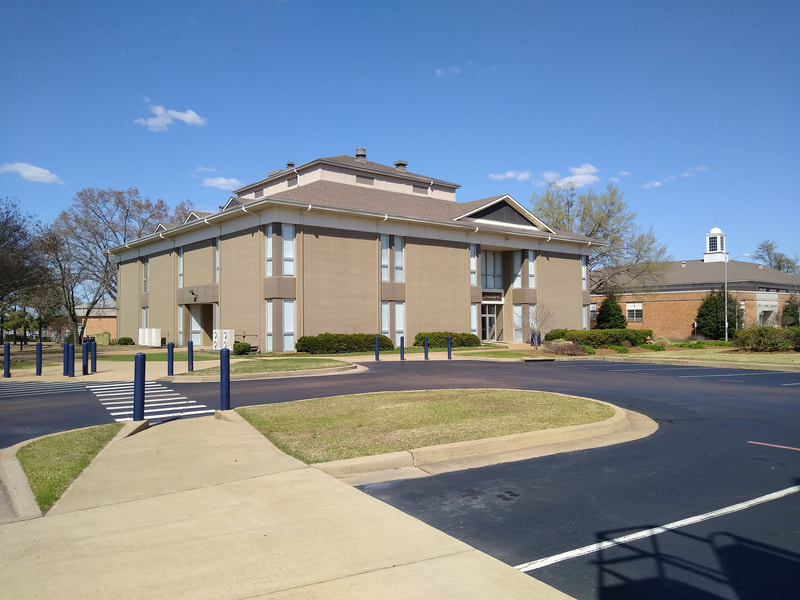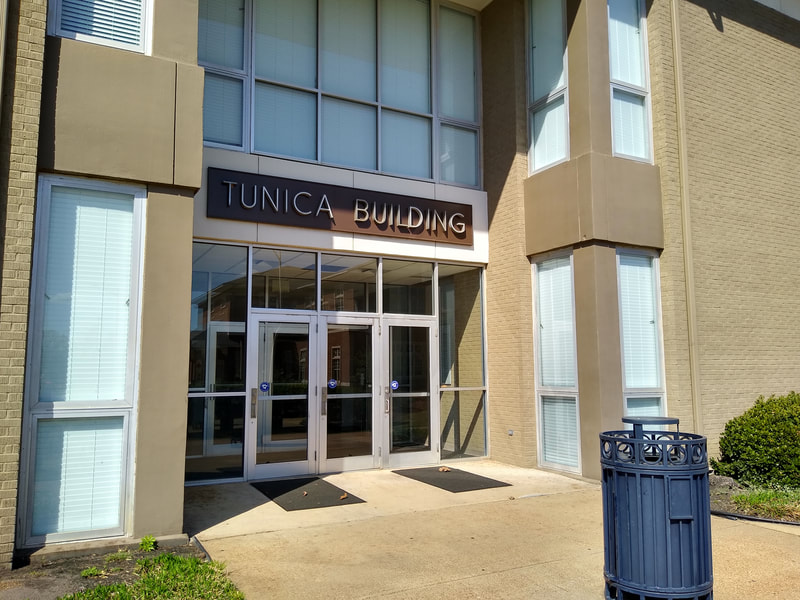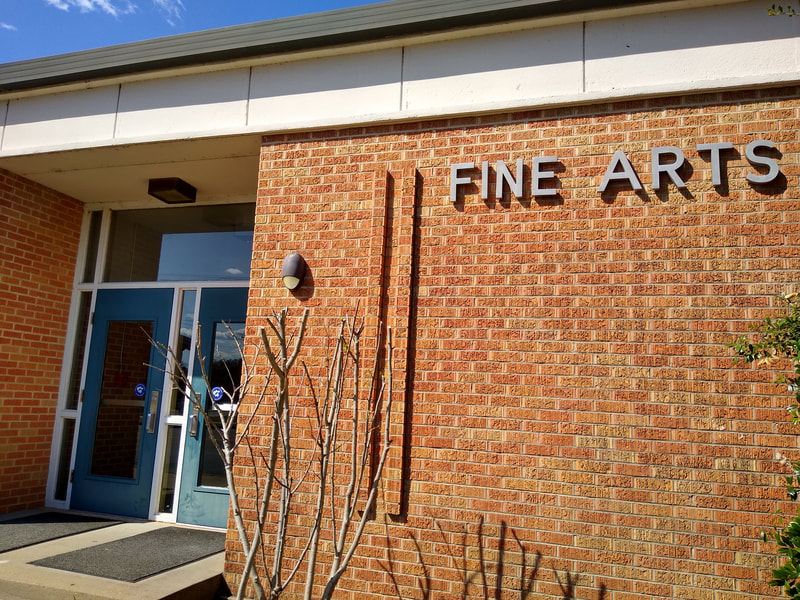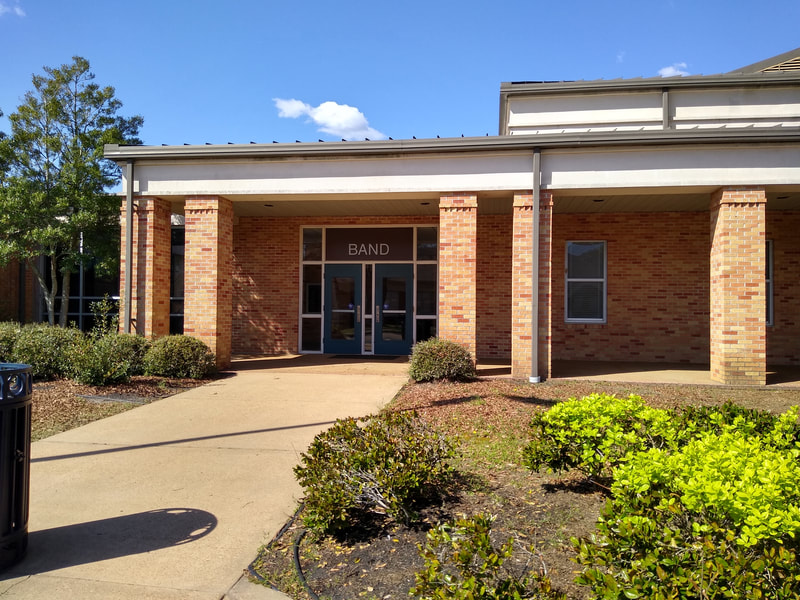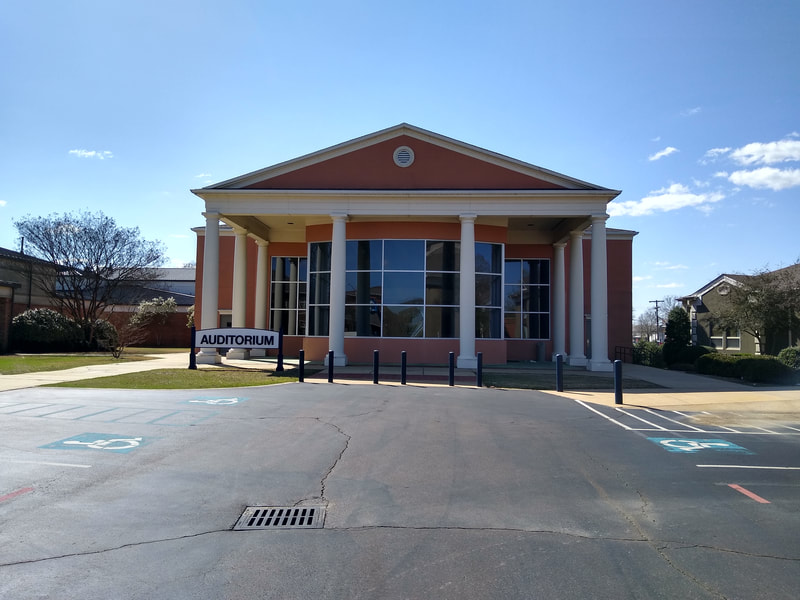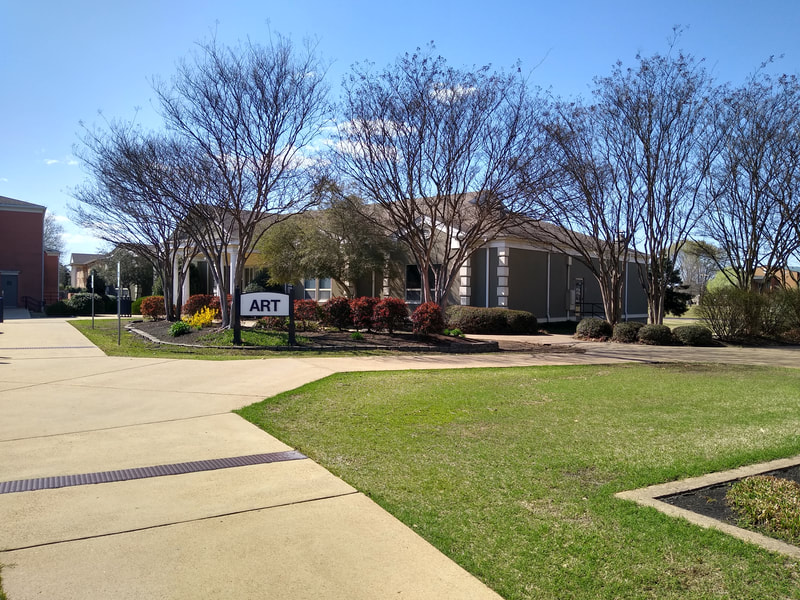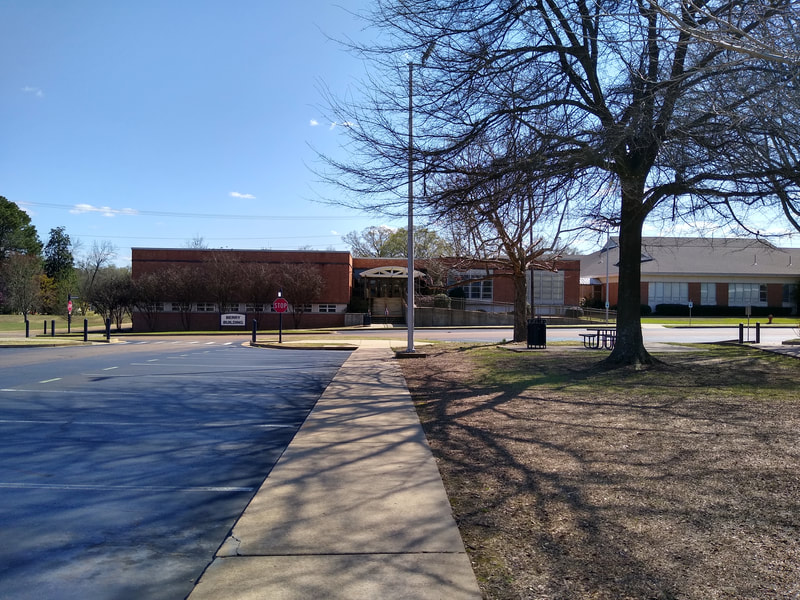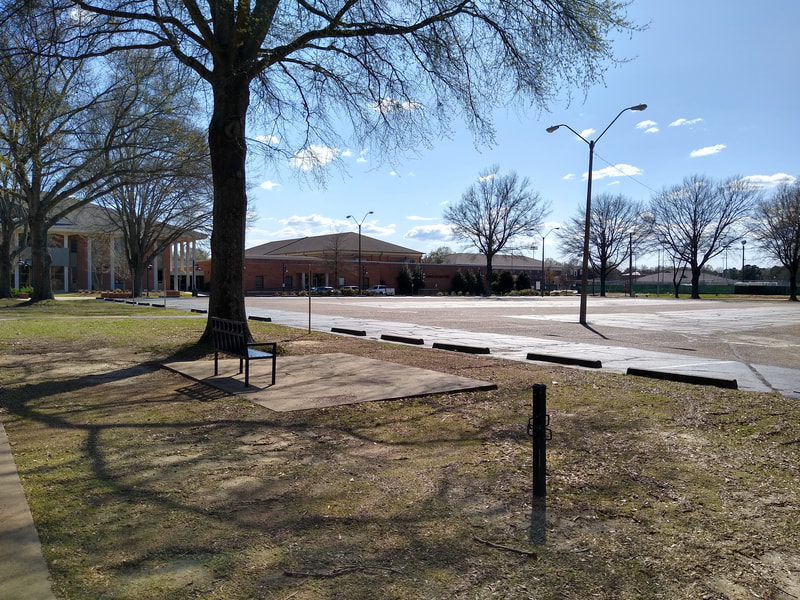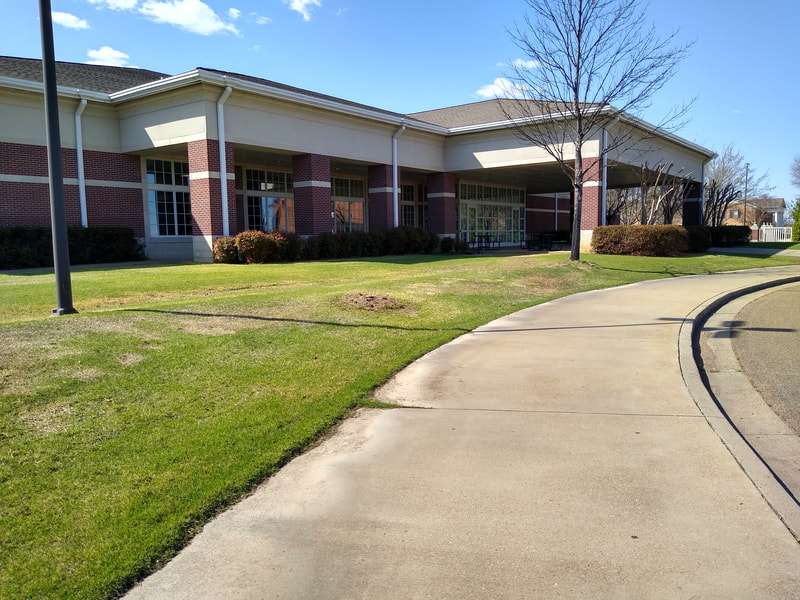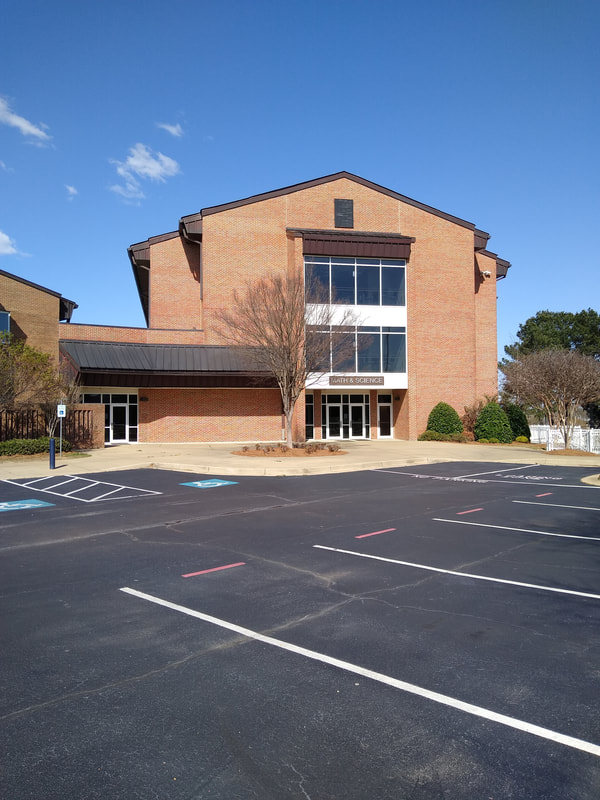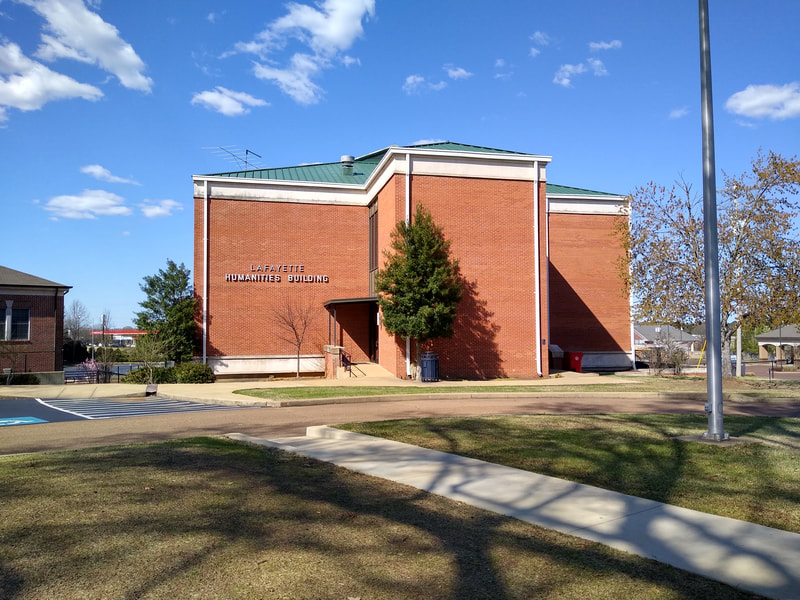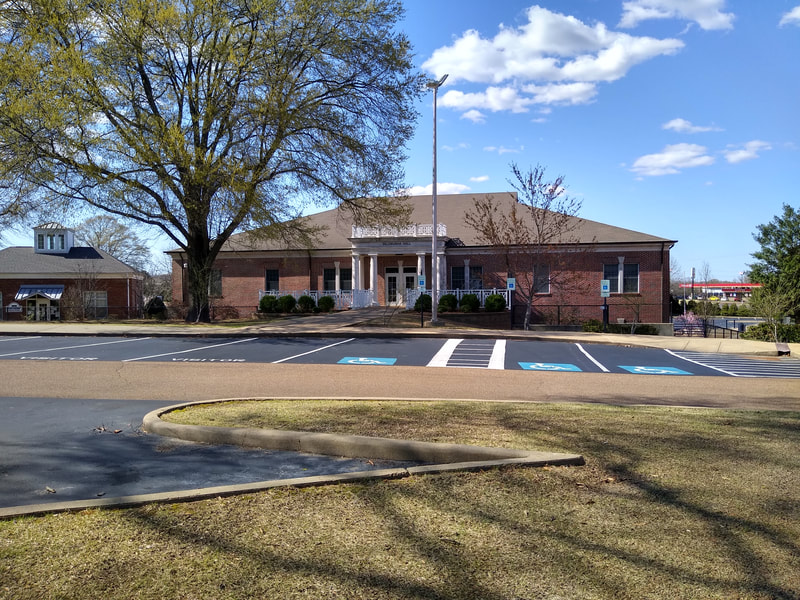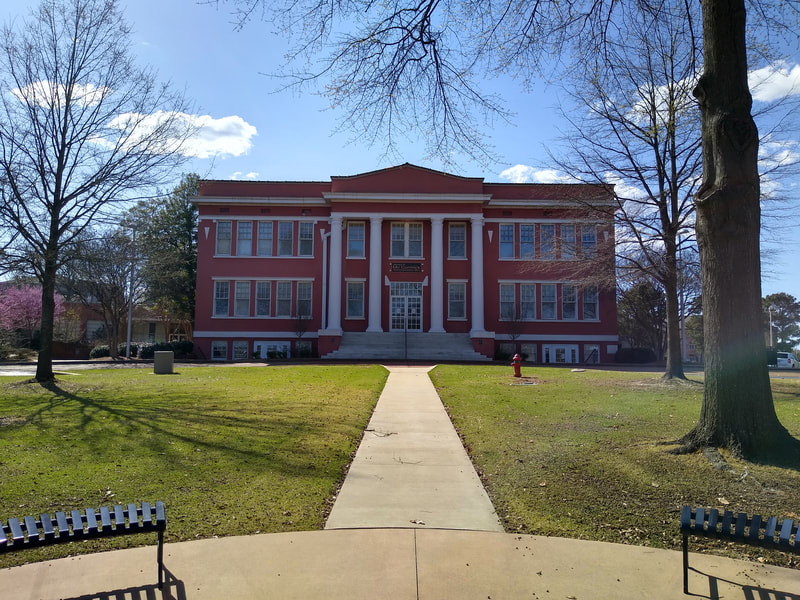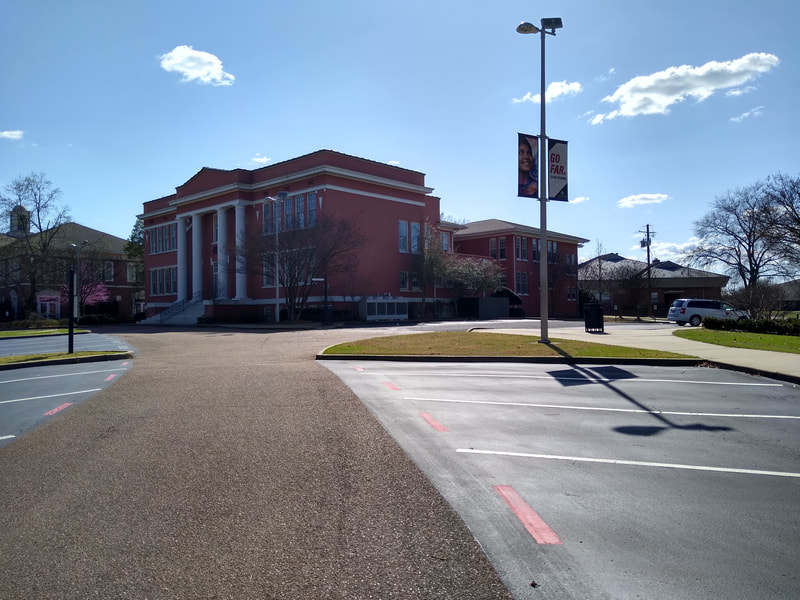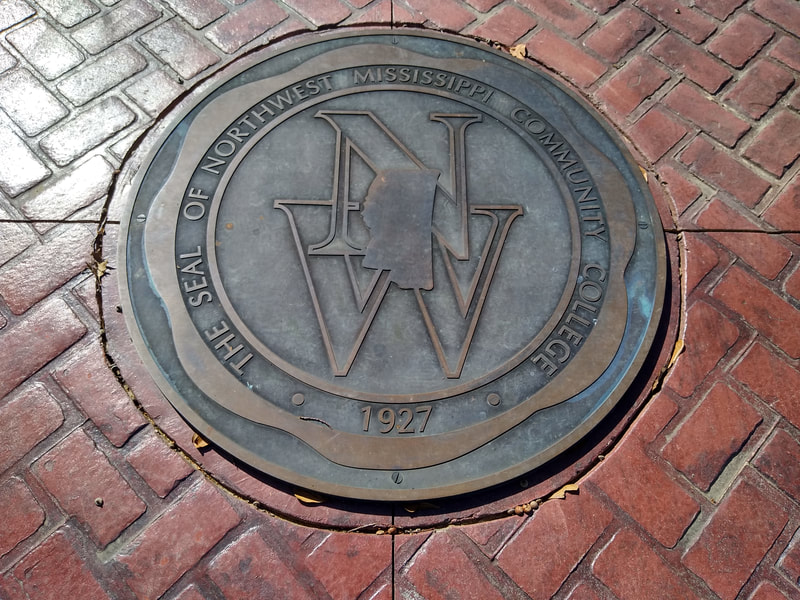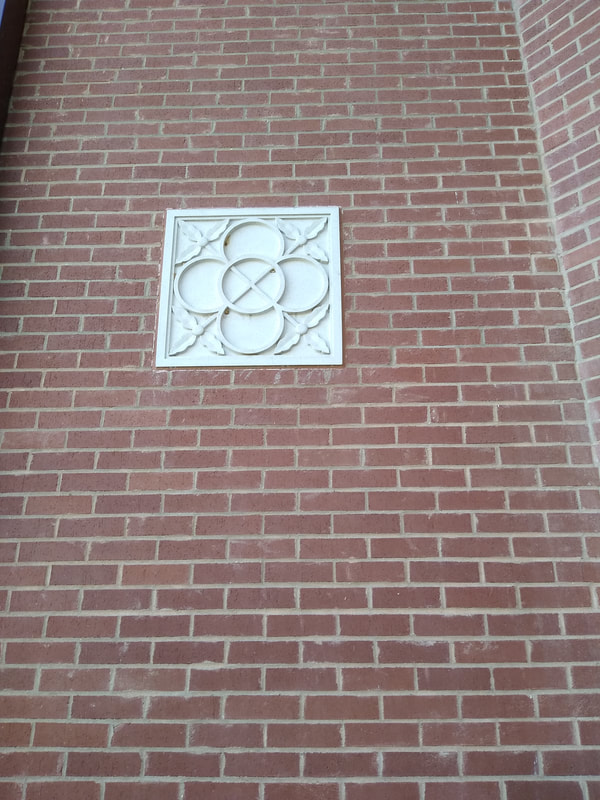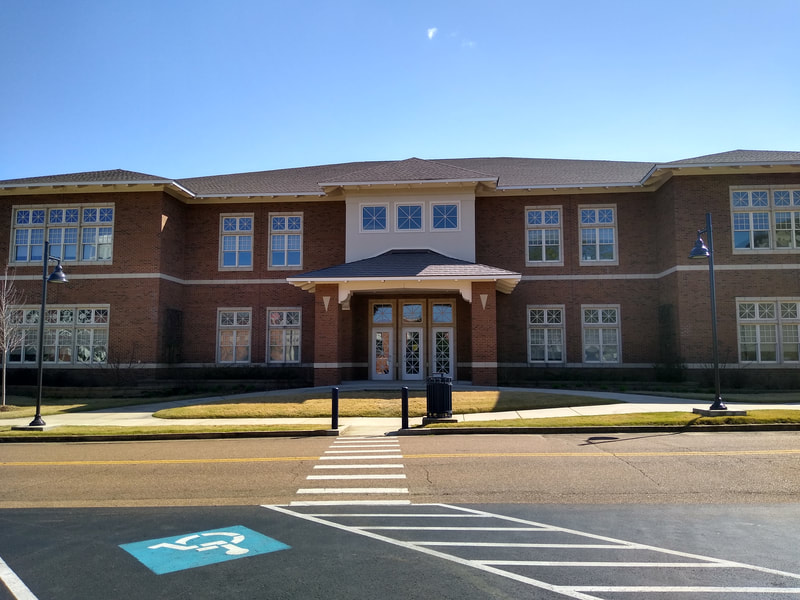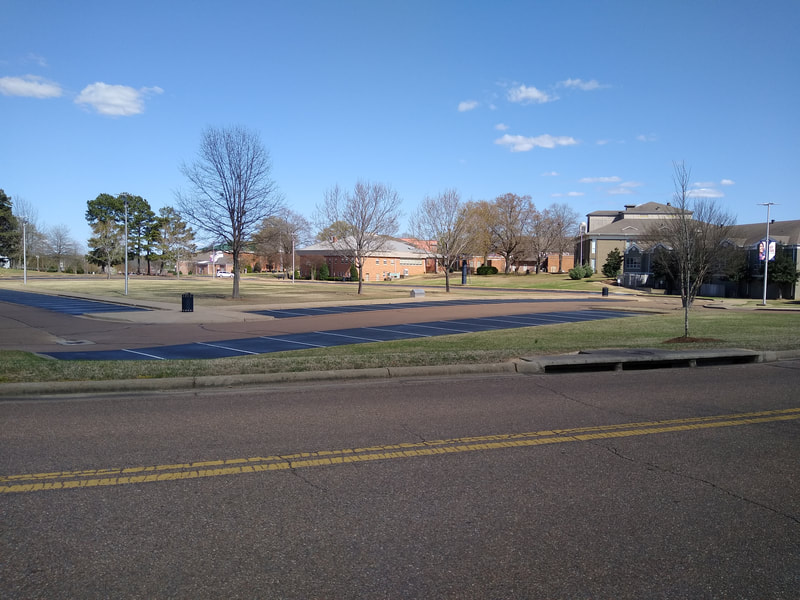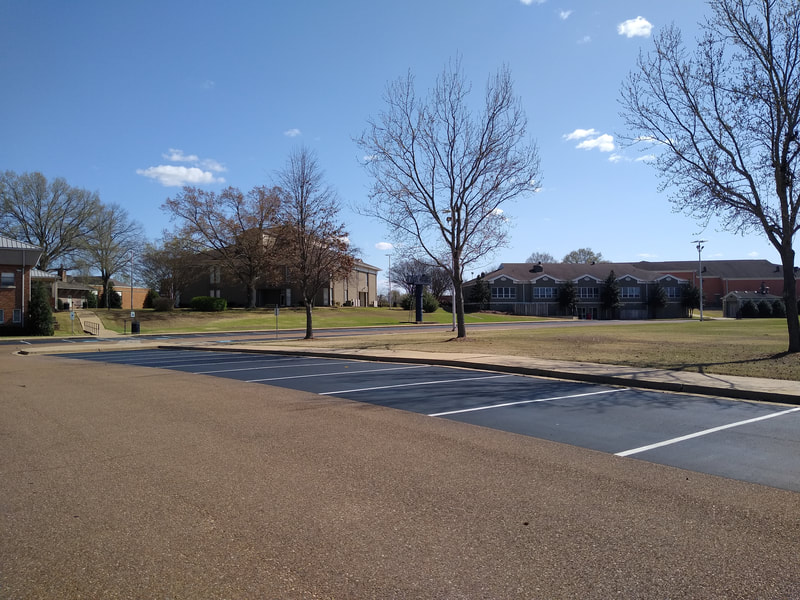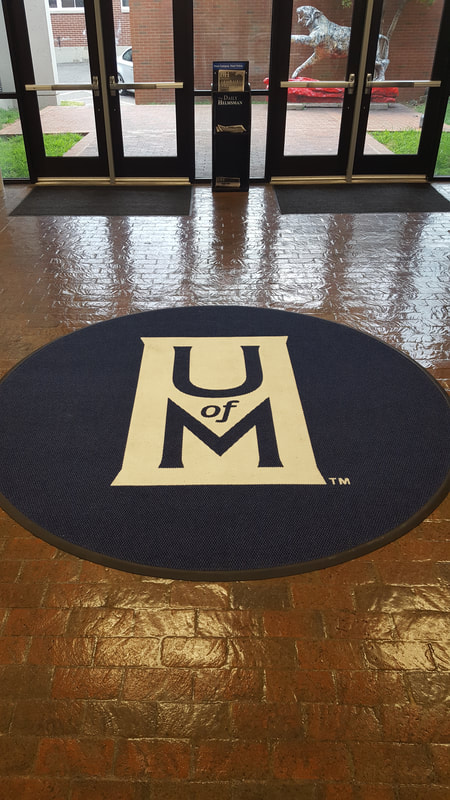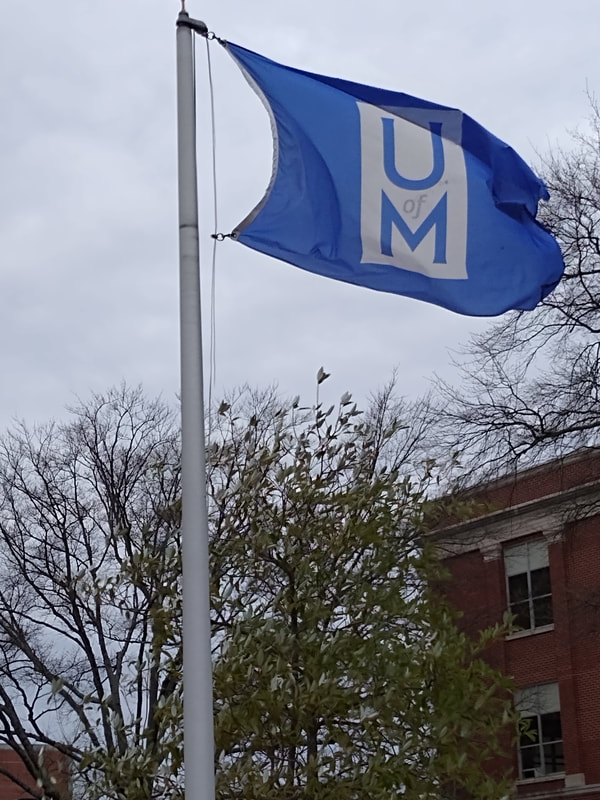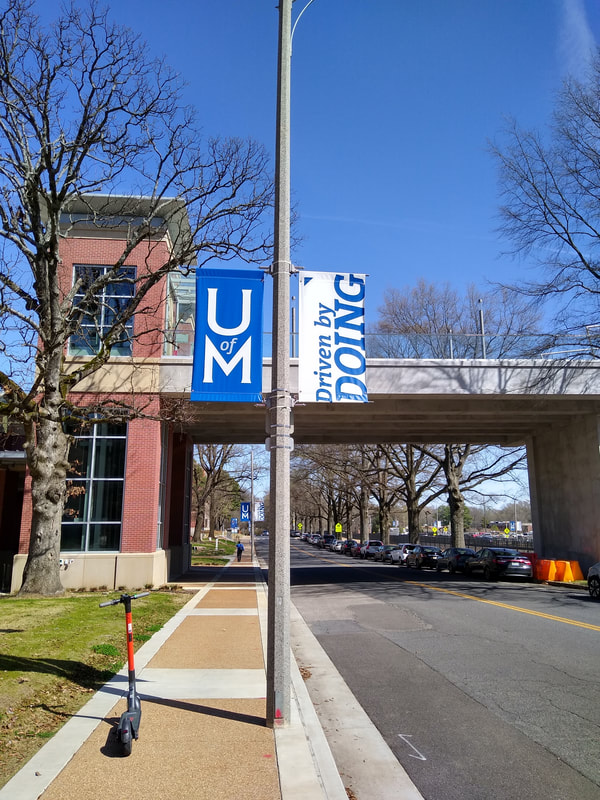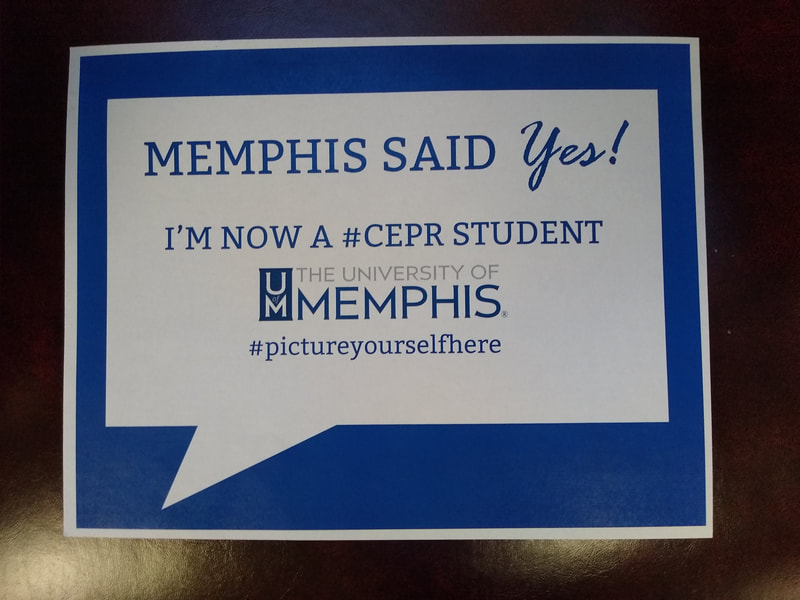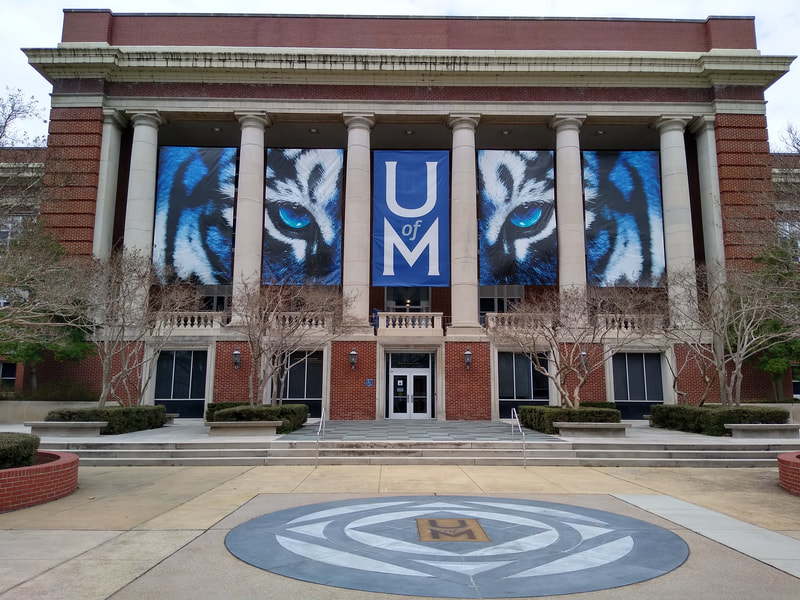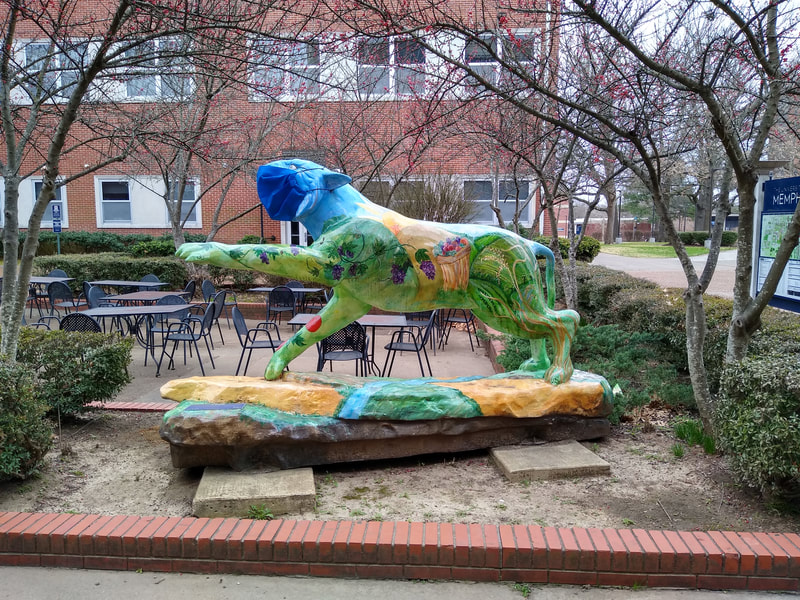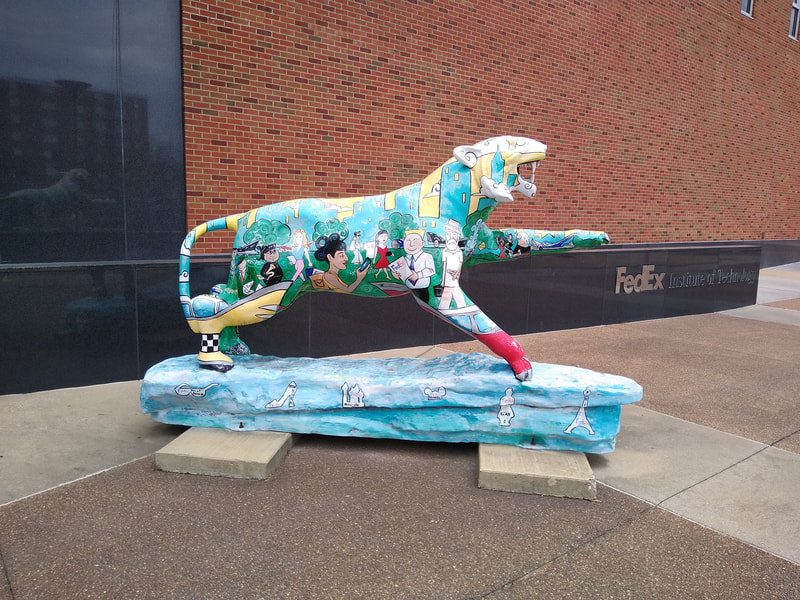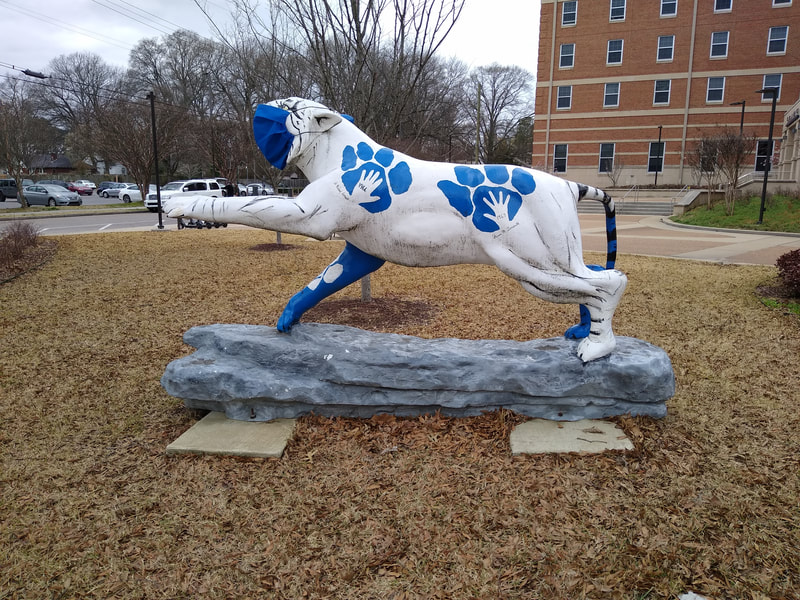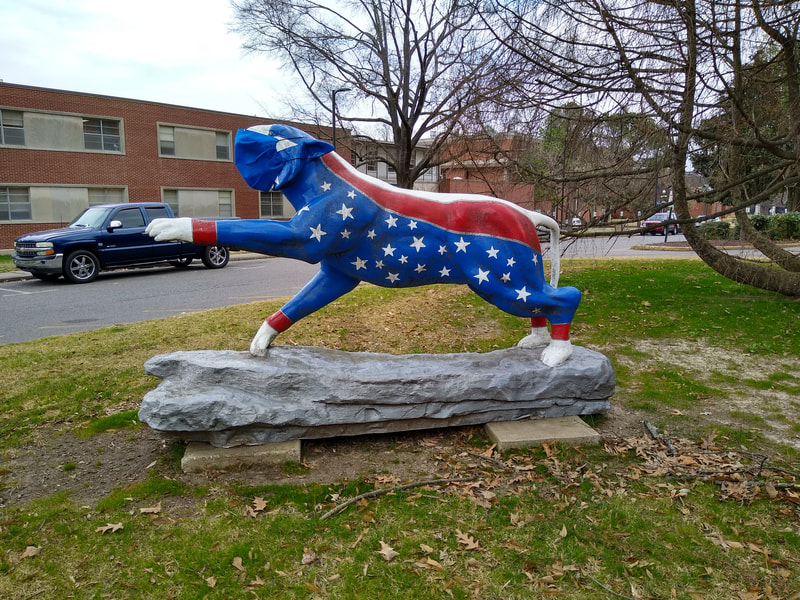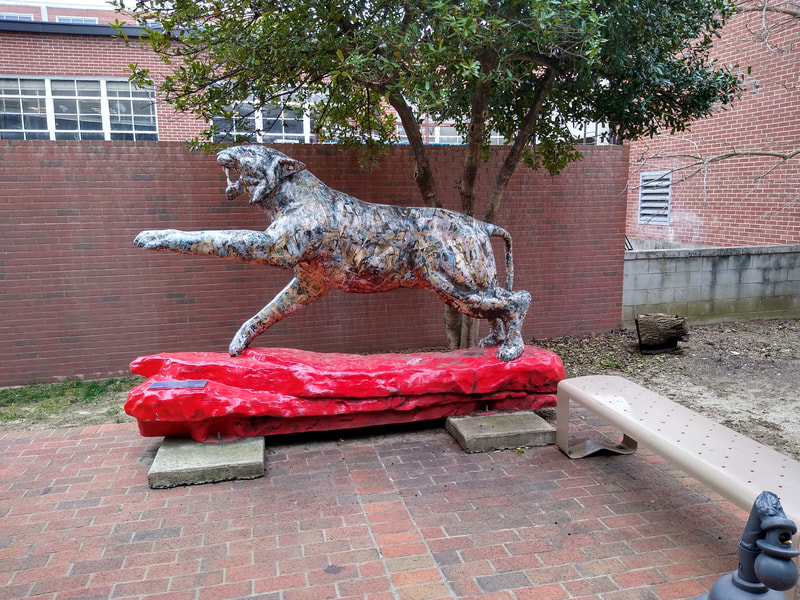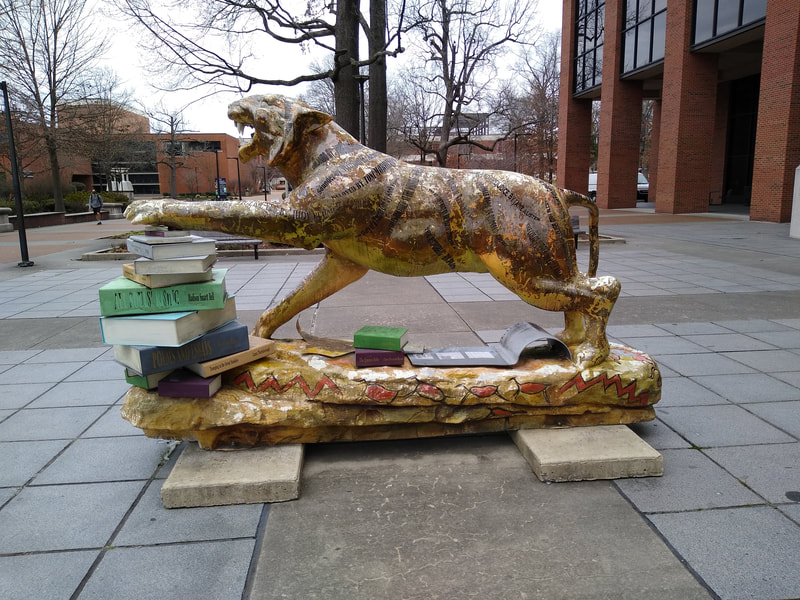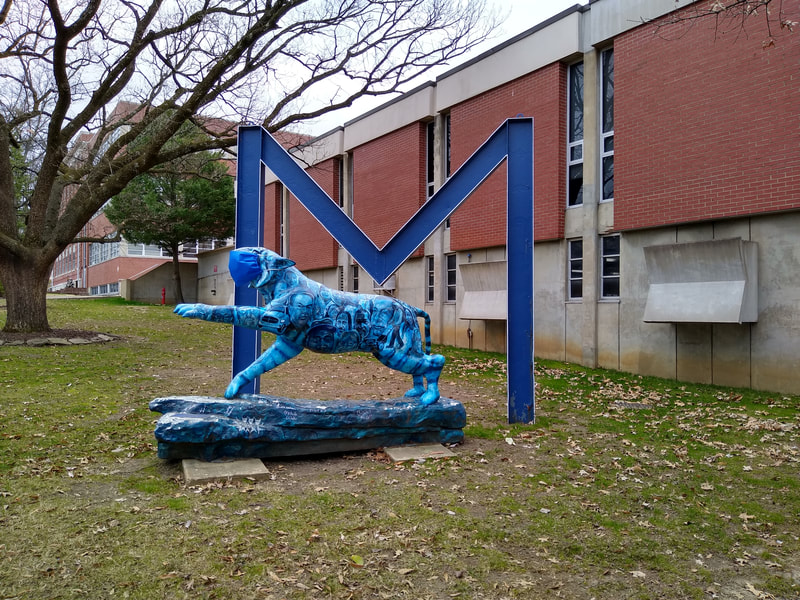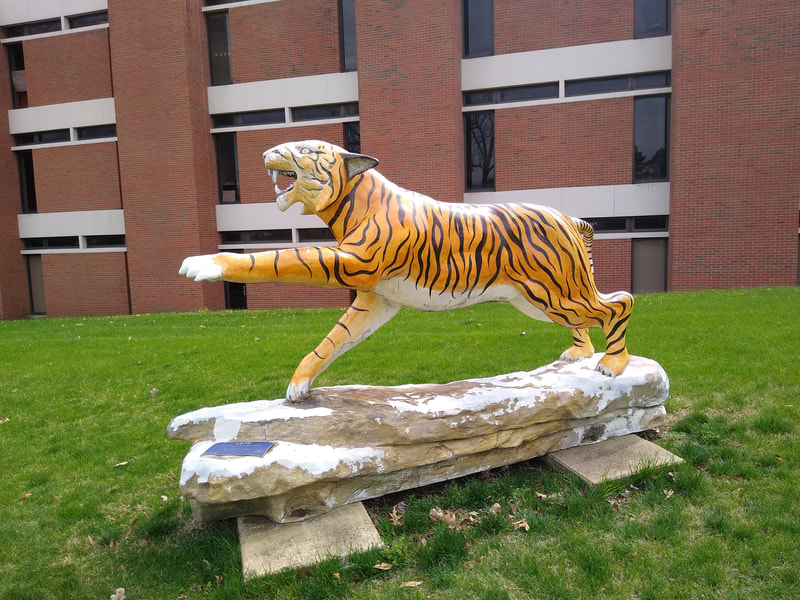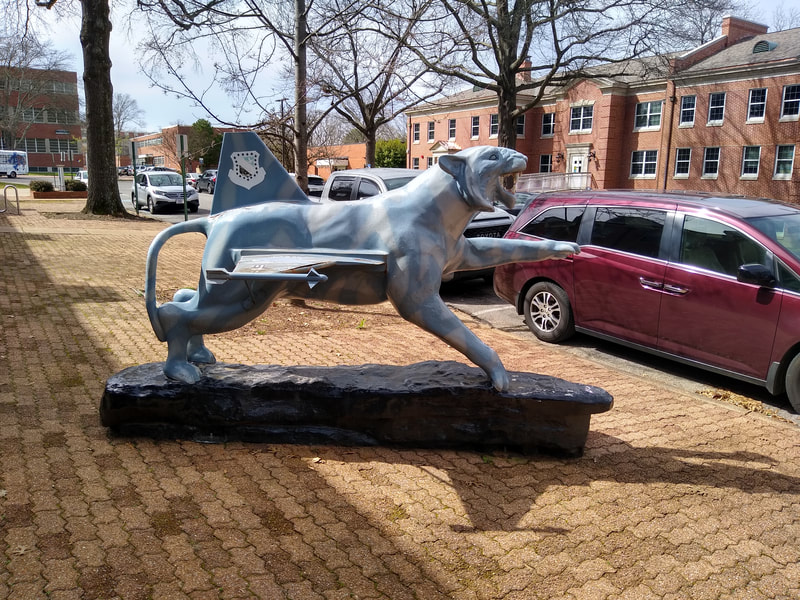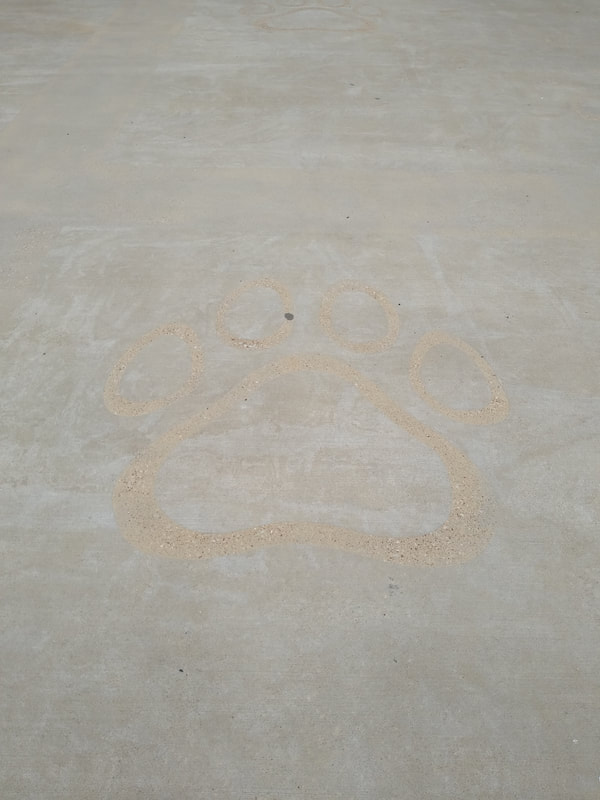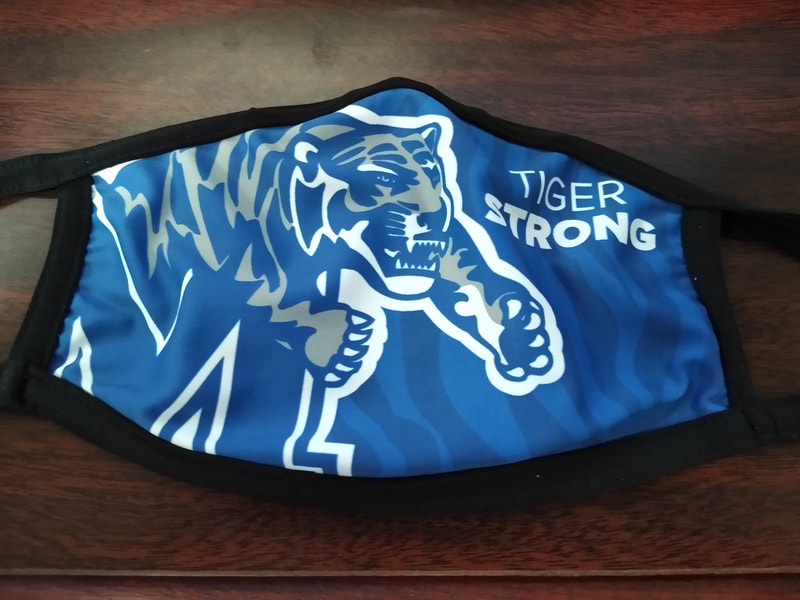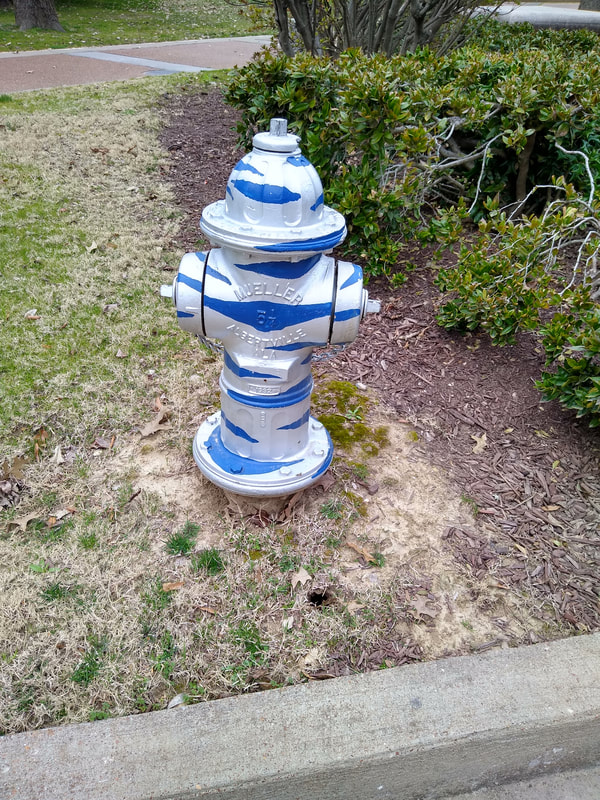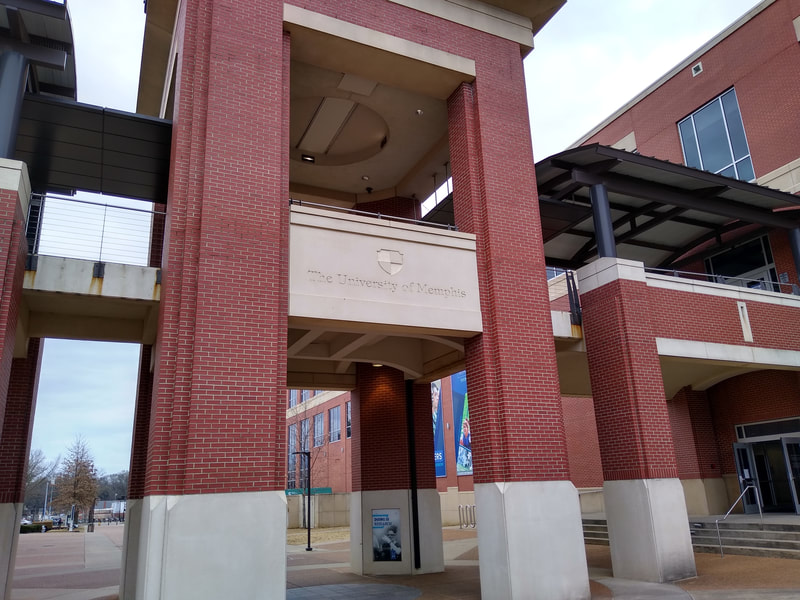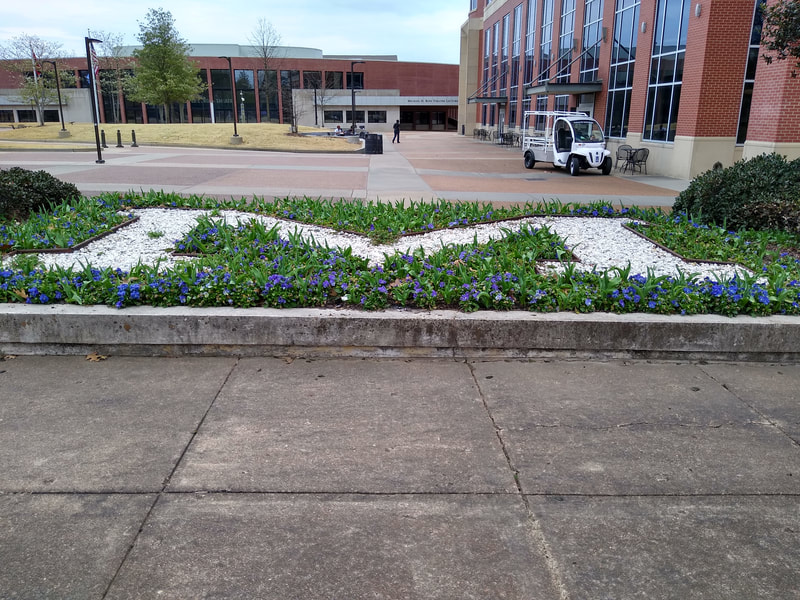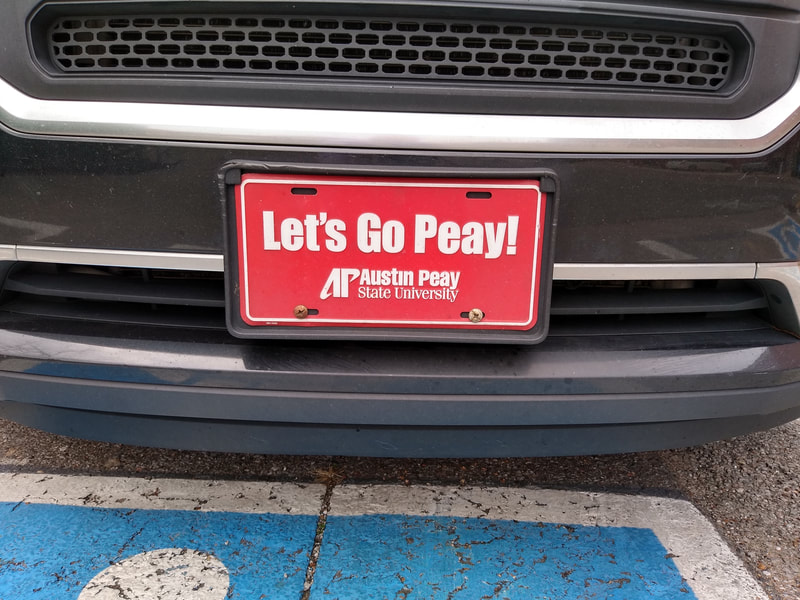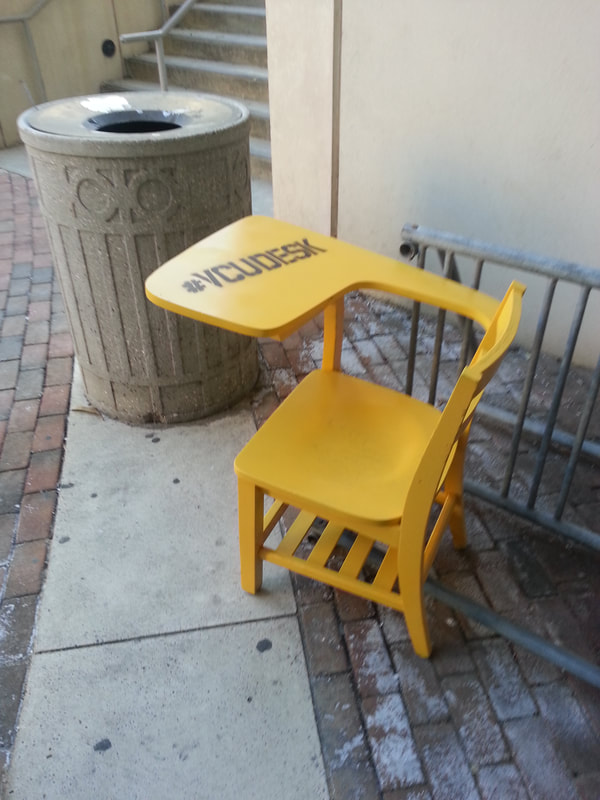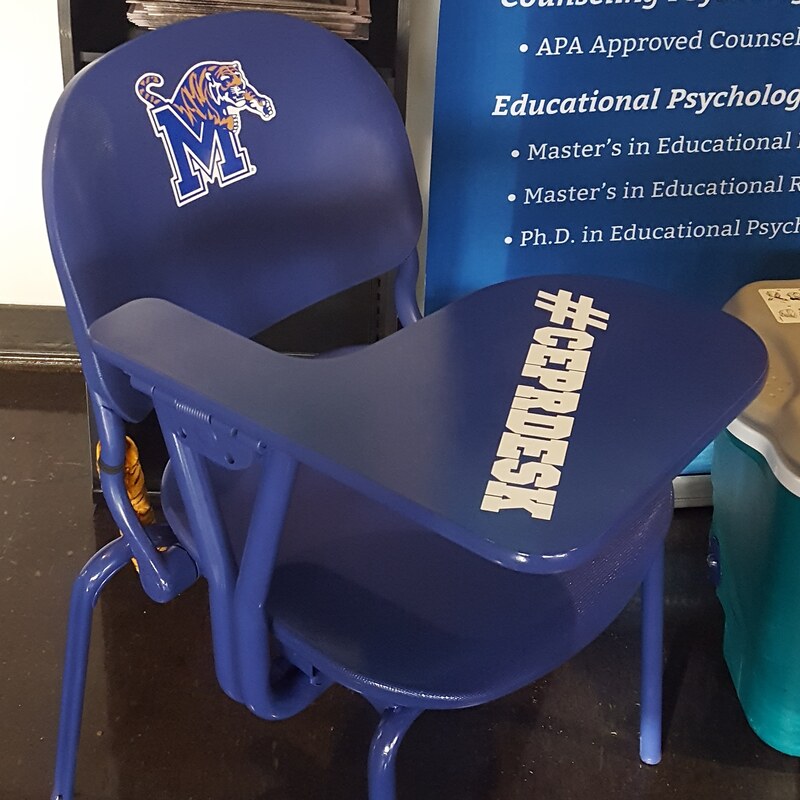University Grounds
Menu
University grounds
|
Community colleges play an important part in the nation’s education system. There are over 1,200 community colleges in the U.S., and they enroll more than 12 million students annually. And although I have been associated with higher education in one form or fashion for more than 30 years, I can tell you that most of the people who work (or attend) colleges in the 4-year sector don’t spend a lot of time thinking about community colleges. In many ways, it’s a different world despite the similarity in mission. And to me, that is a real shame. Community colleges play an important, and massive role in higher education. That’s why I wanted to focus this post on a large community college near my home in the Memphis area, Northwest Mississippi Community College (or NWCC). NWCC is four-campus institution with the main location being in Senatobia, MS, a town less than 30 miles south of Memphis, TN. The other campuses are located in Southaven (a city which directly abuts Memphis), Ashland, and Oxford, MS (the home to the state’s flagship institution, the University of Mississippi). In sum, the NWCC has an enrollment of better than 7,100 students (full-time equivalent, or FTE) and well over 5,000 FTE are enrolled at the main campus in Senatobia. To put that number in perspective, there are two private liberal arts schools in Memphis – Christian Brothers University and Rhodes College – which have fewer students combined (about 4,000 FTE) than the Senatobia campus of NWCC alone. Today’s entry is the main campus in Senatobia. I visited NWCC this month on a wonderfully warm spring day in March. I visited on the weekend and the buildings were locked, so I was unable to see the interior of any of them. The NWCC campus in Senatobia is unique for the institution in that it has residence halls which, prior to COVID-19, housed some 1,100 students. It is the only NWCC campus with housing. Currently, NWCC has nine residence halls and is in-process with developing a new one. I lived in Virginia for well over a decade before coming to the Memphis area, and there are no residential community colleges there. In fact, the most recent report by the American Association of Community Colleges (AACC; 2015) noted that only about 28% of community colleges have student housing. The college also competes in intercollegiate athletics, with five men’s and five women’s sports. The campus sits on roughly 190 acres which, if you go back to an earlier post, is larger than the campus of the University of Denver. In addition to the main campus, NWCC operates a teaching farm of some 390 acres nearby. NWCC has its roots in the Tate County Agricultural High School which opened in 1915. College level classes were offered in 1926. The state of Mississippi encouraged the growth of the institution, and along with the leadership and support of Porter Walker Berry, it became a junior college in 1928. The year it opened 58 students enrolled and the faculty numbered 10. I hope NWCC and the state of Mississippi plan something special for the centennial in 2028! Porter Walker Berry was the inaugural president of the institution, serving in that capacity from 1928 until his death in 1935. First up is the R.C. Pugh Library. Roscoe Conklin Pugh was the second president of NWCC, serving in that capacity from 1936 until 1953. The library has roughly 90,000 volumes and includes a small law collection. It was constructed in 1952 at an expense of $778,486 (that's more than $7.7 million in 2021 dollars). The first two photos below are the south entrance and the last is the north entrance. An addition to the building was completed in 1968 which nearly doubled the size of the structure. Next up is the Tunica Building. The Tunica Indians were native to the northern part of Mississippi. Tunica is the name of both a county and its county seat in Mississippi. The Tunica Building was completed in 1975 and for many years housed the nursing program Next is the Fine Arts Complex, consisting of connected structures for Art, Band, and an Auditorium. NWCC has had a marching band - the Northwest Ranger Band - since 1954. Next door to the Auditorium Building is a newer Art Building. The Berry Building, in the first photo below, opened in 1966. It was named for Porter Walker Berry, the first President of NWCC. For a time, the Business Department was located there. It now houses career and vocational education programs. There are three buildings called “Technical Education”. Technical Education 1, in the second photo below, opened in 1961. On the right side of this photo you can see part of the McLendon Center, detailed below. The photos below are of the McLendon Center, the student union for NWCC. I believe the part seen in the first photo is the original portion of the building, and the second of the addition. McLendon is named for Reese Dermont McLendon, the fourth president of the college. McLendon had previously served as president of Pearl River Community College (then Pearl River Junior College) in Poplarville, MS. The building opened in the spring of 1969. When it opened, it was the largest student union in the state of Mississippi. It was formally dedicated on October 25, 1969. McLendon retired on June 30, 1974. The McLendon Center would be renovated and expanded in 1988. The building on the left in the foreground of the first photo is Bobo Hall, one of the dormitories on campus. There are many dorms on campus, and I only took a photo of a couple of them. Taylor Hall can be seen in the first photo below. It was named for Henrietta S. Taylor, a member of the NWCC Board of Trustees who was in her 41st year in that capacity when the building opened. Taylor Hall opened in September 1968. In the second photo, the David M. Haraway Center, a mixed use/student athletic center, is in the foreground. Behind it is Taylor Hall, which opened as a women’s only dorm in 1965. The Haraway Center is named for the 7th President of NWCC. The building, opened in 2005, houses a cafeteria, meeting and banquet rooms, a conference center, and meeting rooms for the NWCC Board of Trustees. The building is about 42,000 square feet. The third photo is a better shot of Haraway. One of the newest dorms on campus is a complex of four buildings named Desoto Hall. Seen here in the fourth photo, Desoto is named for Desoto County, which is in the catchment area of NWCC. It is named for the explorer Hernando de Soto. Desoto County is just north of Senatobia, and the Desoto County seat is the town of Hernando. Next we have the Math and Science and Physical Science Buildings in the first three photos below. The building opened in 1984. The McGhee Building, seen here in from the front (photo 4) and rear (photo 5), opened between 1957 and 1959 (I was unable to find out exactly when), and significantly remodeled in 1981. When it opened, it was a cafeteria and field house. It is now an academic building. The next photo is the Lafayette Humanities Building which opened in 1970. Next door to Lafayette is Yalobusha Hall. Financial Aid is located in Yalobusha, but I don’t know anything else about it. I believe other student support offices are in the building. Yalobusha is a county in Mississippi in the NWCC catchment area. The Native American word yalobusha means “tadpole place”. The photos below are of the McCormick Building. I believe McCormick is original to the campus when it opened (I may be wrong about that). The building has an addition in the rear which was added in 1938 at a cost of $120,000 (roughly $2,285,827 in 2021 dollars), with funding coming from Tate County (where NWCC/Senatobia is located) and the Federal government’s Public Works Administration. The building is an administration building, and it may be that the NWCC President's Office is in the building. McCormick came to NWCC as a faculty member in business in 1949. He was later Chair of the Business Department, then Dean of Instruction, Dean of the College, and finally President. The last photo in this series is the NWCC seal in the sidewalk seen in the second photograph. Next up is Tate Hall, an administration building. If McCormick is not the home to the NWCC President’s Office, I imagine Tate Hall is. It is the newer of the two buildings by far, having opened in 2003. The building is not the first NWCC structure to carry the “Tate Hall” moniker. The original women’s dormitory on campus carried that name as well. Senatobia is the county seat of Tate County. The county is named for Thomas Simpson Tate, an early settler of the area. Next, we have the Gary Lee Spears Center for Nursing and Health Sciences. It's really two adjacent structures. In the first photo, you have the Nursing Building, and in the second the Health Sciences Building. Spears was President of NWCC. I'm not sure what this little structure is, but it is reminiscent of a railroad station. It shows up on the NWCC campus map, but there is no name for it and I could find no mention of what it is on the college website. Finally, a few campus photos. First is the Band Practice Field, just beyond the parking lot in the photo. In the second, you can see the band director’s stand. The campus itself is quite nice. It is gently rolling and has some nice green spaces to it. Lastly, the college slogan on a lamppost sign. I like it “Go Far. Close to Home.” The first one is near McLendon, the second on the south side of Tate.
0 Comments
Another entry that is not on campus architecture but a bit of campus life. In an earlier post, I noted how I re-used an idea from another institution (#vcudesk) and turned it into a recruitment tool for my department (#ceprdesk). All of that is branding, of course, and branding is increasingly a big deal for colleges and universities. Schools have long had distinct, and copyrighted, logos and symbols, particularly with regard to athletics and athletic mascots. The academic side (i.e., the main purpose for higher education in the first place) had a much smaller (if any) part in all of that. I did my undergraduate and master’s work at the University of Tennessee, Knoxville. During my time there, the football team was very good and the women’s basketball team was winning national title after national title. Not surprisingly, sports trademarks were on everything at the bookstore. You could get anything with the sports logos on them, but you could only get a few items (mostly notebooks) with the university seal on it. The seal and a stylized UT in the shape of the state of Tennessee were the only things you would see that were not athletics oriented and there were few things that had those items on it which did not mention athletics in some way. I remember a friend of mine who was at Vanderbilt at the time asking what it was like to attend an athletic team that had a school attached to it. Today, just about every university has a style guide with specific fonts, colors, tag lines, and graphic elements that are to be used along with a list of what not to do. Still, at many places with intercollegiate sports, the athletic logos are still more common than other things. It’s a balancing act, and some schools are more balanced than others. I have to say that I think my present institution, the University of Memphis, does a pretty decent job with that balancing act. True, a lot of the clothing items in the bookstore have the athletics logos on them, but across campus and around the area, you see the academic side of the university presented pretty well. They also balance the use of the mascot – the Memphis Tigers – for both athletics and the university proper. In our case, you see a couple of things reflected in branding. For the academic side, the UofM column logo is the most common. You will find it on our official documents (i.e., letterhead, catalogs, brochures, etc.), on some clothing items (you can see it on our departmental shirts in my March 5, 2021 entry), and on lapel pins (we tend to wear them as employees at official gatherings and for our official portraits). You also see them on lampposts around campus and the area surrounding campus. Below are a few photos of the column element in various places. First is a floor mat in the journalism building on campus from 2018. Second is the column on a flag outside the Administration Building. The third photo is the column element on banner on a lamppost along with a banner with one of the university's catch phrases. The logo also appears on university vehicles, an electric cart used but the physical plant in the case of photo four (with a play on the university tag line as well). In addition to brochures, our department places them on other items, in this case a sign our newly accepted students get and use in photos of themselves upon admission (photo 5). Photos two through five were taken this month. In the next photo, you can see the logo on our department swag and banner during a set-up for a graduate school fair at Mississippi State University in spring 2017. Finally, you have two photos of the columns used as backdrops in our commencement ceremonies held in the FedEx Forum. When this particular large banner was first used, as in this 2018 photo, it was the sole backdrop. In the latter, you can see two banners with the less often used university seal which have been standard at commencements since 2019 when this photo was taken. One of the great “crossover” brand elements is the Tiger mascot. The tiger is used on both the athletic and the academic side. Sometimes, the tiger element is used in conjunction with the columns, as is the case on the banners on the Administration Building in the first photo. In 2011, the Alumni Affairs office started something in celebration of the university’s centennial they called “Tigers Around Town”. Tiger statues, alike in shape but uniquely painted, were installed on campus and around town. Groups could sponsor the tigers as part of the effort. There are 100 of these around town, and quite a few on the main campus, the Park Avenue Campus, the Millington Campus (in Millington, TN), and the Lambuth Campus (in Jackson, TN). The Memphis metro area extends into Mississippi and Arkansas, and there are two Tigers in the Mississippi suburbs as well (not a small feat to have a University of Memphis Tiger in Ole Miss and Mississippi State country). You can learn more about Tigers Around Town here. There is a nice archived story about it from the UofM student newspaper, the Daily Helmsman, here. Below are a few examples of the Tigers Around Town from the main campus. You can also see some in the other UofM posts on this blog. All of these photos except the last were taken in March 2021; the last tiger was taken in 2018. The Tigers Around Town are not the only tigers on campus. Indeed, we have a permanent bronze tiger just outside the University Center. For years, the university had its own live tiger, Tom. The first Bengal Tiger came in 1972 and succession of two more followed. Tom would be brought out to games in a cage and the fans would go wild for him. The name Tom is actually an acronym. A naming contest held in 1972 had more than 2,500 entries. Tom, standing for Tigers of Memphis, came out on top. Tom III passed away in September, 2020, just shy of his 12th birthday. The city of Memphis would not allow a new tiger in the area, so he was the last and his passing ended a very well loved 48 year old tradition. You can learn more about Tom here. Tiger elements can be found across campus and on various things like t-shirts and pendants. The university opened a pedestrian bridge recently (see my previous UofM post for details), and there are tiger prints embedded in the concrete walking surface as seen in the first photo below. Another tiger element, which currently appears on the UofM football helmet, includes a stylized tiger with a capital "M". We use the logo on our #ceprdesk and it is on the first tiger in the previous photo gallery. It is also some of the face masks the university provided to faculty and staff during the pandemic, like the one in the second photo. Like many universities, we also trade on our colors. The UofM’s official colors are “University” Blue (a shade of royal blue), and “University” gray. It’s a nice color combination. You see it all sorts of things. In the case of the photos below, a fire hydrant and a set of parking deck bollards. Other branding elements for the UofM are used less frequently or are no longer used at all. A shield type logo came out in the either the late 90's or early 21st century. It showed up on stationary and other official documents and was an attempt to have an academic-identity logo. It was not well liked, nor very unique, and fell out of favor about as soon as it was introduced to be replaced by prominent use of the column logo. In the first photo below you see one of the few instances of its continued use, pressed into the concrete siding of the pedestrian bridge connecting the Curlin Parking garage with the University Center. The "M" can be found in a few places as well. In case of the second photo, in a flower bed between the UC and the Administration Building. Back before branding became the big deal it is today, we were not the University of Memphis, but Memphis State University. The name change occurred in 1993. Back in the day we had a number of simple signs at various entry points around campus. The signs were simple black lattice pieces adorned with "Memphis State University" in white letters. As a matter of fact, these were fairly common on college campuses back in the earlier part of the 20th century, particularly in the Southeast where quite a few remain. After the change from MSU to the UofM, several of these were taken down (I don't think they all were). Although pleased with the name change and the growth of the institution, many alumni missed the signs. Current President David Rudd put a few of them back up, including the one the west side of campus seen in the last photo. Of course, we are not alone in branding. I will revisit the topic in detail with other institutions in a later post. Walking around campus this month, I saw the license plate below. It caught my eye and made me laugh and I had to include it in this post. Austin Peay State University is public school in Middle Tennessee. Austin Peay was a three-time governor of the state in the 1920's. He is generally rated one of the best governors in the state's history. He was a big proponent of education in general and higher education in particular. There is a building named Austin Peay on the campus of the University of Tennessee, Knoxville, which houses the Psychology department. The athletic teams at Austin Peay State are known as the "Governors". This plate has their stylized "AP" logo, along with a double entendre tagline.
“Imitation is the sincerest form of flattery that mediocrity can pay to greatness.”- Oscar Wilde
Today’s post is not about college buildings or campuses, but rather a part of campus life. Recruitment is a big deal in higher education. With the decline in the traditional college-aged population, undergraduate recruiting is very important. The department I lead has an undergraduate minor but is really a graduate-level shop. Graduate student recruitment is increasingly competitive as well. When I arrived at the UofM in 2016, there was little going on in terms of formal recruitment. One of my faculty would do outreach for our Clinical Mental Health Counseling program in undergraduate psychology classes on campus, and we attended the once-per-year UofM grad school fair. We had a few brochures for some of our programs, some logo pencils for another one, and that was about it. It was a recruitment method from the 1970’s. I call it the “Field of Dreams” method after the movie and the famous quote “If you build it, they will come”. Basically, it was a method that rested on people randomly finding us and applying. I set about changing all of that. We now have dedicated marketing, a large social media presence, banners, swag, and a multi-tiered recruitment method that resulted in better than a 25% increase in enrollment in less than four years (and we continue to grow). We are now the largest department of our kind in the state with regard to student enrollment. One method I use was taken – carte blanche – from my previous institution. I was working on the Medical Campus of Virginia Commonwealth University, and one day in February 2014 when leaving the Egyptian Building there was a desk (see photo below) chained to a bike rack by the Kontos Building. It was painted in VCU Yellow and had #vcudesk stenciled on it. Although I was at VCU for years, I was on the health sciences campus, and was completely disconnected from the undergraduate side of things. I didn’t know what it was about, but I snapped this photo with my phone. Turns out, the university had painted several of these and was using them as a promotion for the VCU basketball team. The idea was that if you took a selfie with the desk with the hashtag #vcudesk you could win game tickets or a t-shirt. The undergraduates loved it! Fast forward to early 2017 and we were expanding our recruitment efforts. One of the first things I did was get materials ready for half a dozen grad school fairs in the region. I figured that the desk idea, as popular as it was at VCU, could be something we could do as well. I picked up a desk from the UofM surplus building, painted it, added some decals and a tiger tail (we’re the Memphis Tigers) and #ceprdesk was born. It's the same idea as the VCU desk, but for recruitment to our various programs. CEPR is the acronym for my department (Counseling, Educational Psychology and Research). If someone takes a selfie with it and posts it to their social media with the hashtag #ceprdesk, they can win a department-branded t-shirt (like the ones in the last three photos). It has been a hit. Students love to see and take photos with it. I have hauled it to other campuses, and even students who are not close to graduating, and thus not going to the grad school fair on campus, love it too. On many occasions as I hefted it from my car to the site of the local grad fair, people have stopped to ask what it was and invariably take a photo with it. The first two places I took it was to the University of Mississippi and Mississippi State University (both institutions are close to our campus and we have many graduate students who did their undergrad work there). Both of these institutions have very loyal students, alumni, and fans, but even there the desk drew a crowd. Staff members at Ole Miss wanted to take their picture with it and try to win a t-shirt! It's been a lot of fun, and fun is something college life should be! We haven’t been able to move it around or attend grad school fairs in person for the last year thanks to COVID, but its ready to go when things get back to normal. Left to right below are the VCU desk (from 2014), the CEPR desk (from a recruitment fair in 2018), yours truly in one the of CEPR t-shirts we have given away in the past (this was in Busan, Korea in 2018), and examples of our department's new program-specific shirts people can win. |
AboutUniversity Grounds is a blog about college and university campuses, their buildings and grounds, and the people who live and work on them. Archives
May 2024
Australia
Victoria University of Melbourne Great Britain Glasgow College of Art University of Glasgow United States Alabama University of Alabama in Huntsville Arkansas Arkansas State University Mid-South California California State University, Fresno University of California, Irvine (1999) Colorado Illiff School of Theology University of Denver Indiana Indiana U Southeast Graduate Center Kentucky Murray State University Mississippi Blue Mountain College Millsaps College Mississippi Industrial College Mississippi State University Mississippi University for Women Northwest Mississippi CC Rust College University of Mississippi U of Mississippi Medical Center Missouri Barnes Jewish College Goldfarb SON Fontbonne University Saint Louis University Montana Montana State University North Carolina NC State University Bell Tower University of North Carolina Chapel Hill Tennessee Baptist Health Sciences University College of Oak Ridge Freed-Hardeman University Jackson State Community College Lane College Memphis College of Art Rhodes College Southern College of Optometry Southwest Tennessee CC Union Ave Southwest Tennessee CC Macon Cove Union University University of Memphis University of Memphis Park Ave University of Memphis, Lambuth University of Tennessee HSC University of West Tennessee Texas Texas Tech University UTSA Downtown Utah University of Utah Westminster College Virginia Virginia Tech |



